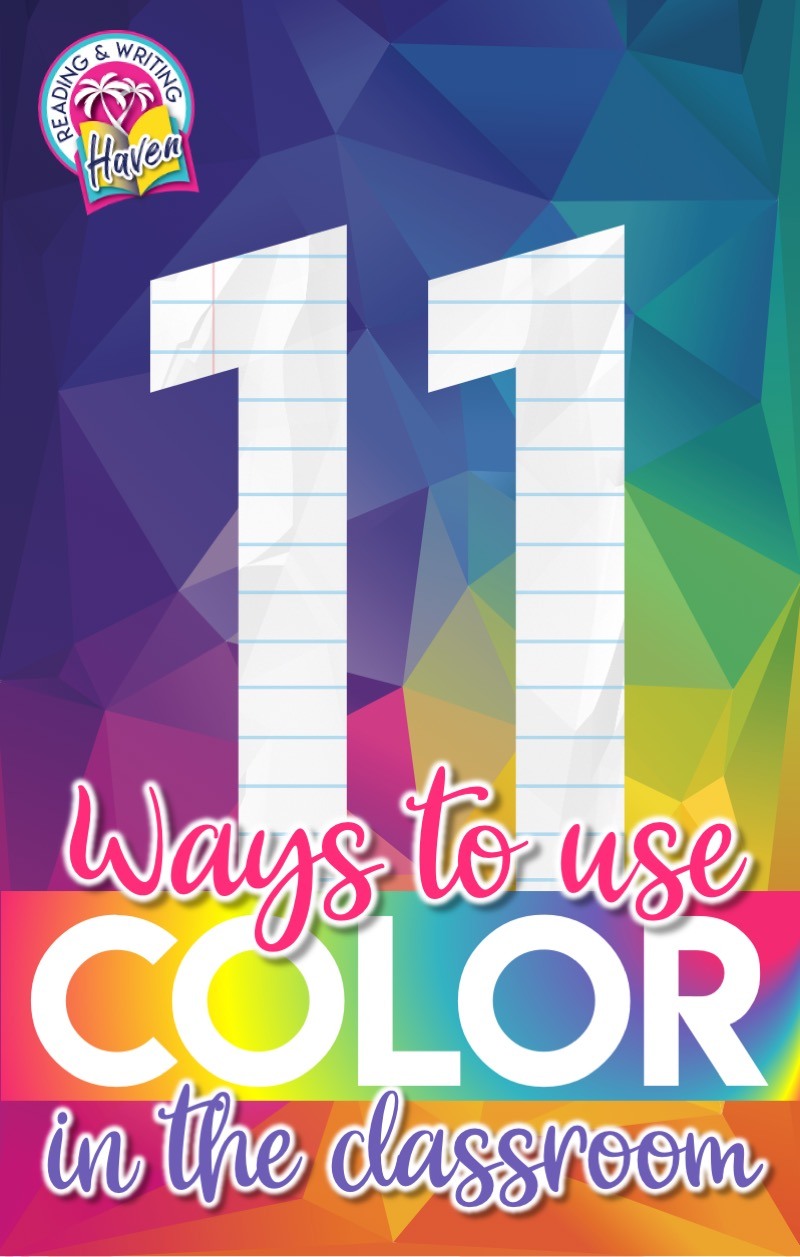11 Ways to Use Color-Coding Strategies in the Classroom
Color-coding strategies are fun, but they also wield a deeper value. Colors can have a positive impact on memory and attention. Using color-coding is a great way to provide scaffolding for students who need it and engage those who don’t. Bonus – it can be applied to every aspect of ELA.
READING
1. Want students to analyze a text? Ask them to read with color. This color-coding strategy helps them to delineate between a main idea, supporting details, and the larger theme.
2. Have students use sticky notes to flag evidence in a text. This strategy makes it easy for them to refer back to the text and find ideas to support opinions during writing and discussion. You can involve color-coding in numerous ways. For instance, have them use different colors for dialogue spoken by each character. Or, have them flag indirect characterization as one color and direct characterization as another. Plot points? Each part of the plot could be a different color sticky.
3. Ask students to color-code the mood of the story. They can note how the mood changes during each scene on a plot line or sequence chart. For a layer of enrichment, use a sound equalizer graphic organizer. Ask students to identify mood with color and tone with the height of the bar. A more intense or suspenseful tone might be colored higher, and one that is more calm might be lower.
4. Recently, I wrote about how I use reading ladders to help older students choose independent reading books that will keep them coming back for more. Part of the concept revolves around using a reading ladder. When students are recording the books they read and abandon, they can color-code each book spine by genre. The color will help them to see if they are reading books from various genres and also if whether there is a certain type of book they abandon more than another.
WRITING
5. Color can help students identify different parts of a paragraph. For instance, when I teach argumentative writing, I always have students color-code the paragraph parts so that we can analyze their effectiveness and determine where improvement is needed.
6. Color-coding model paragraphs is helpful, but have you ever tried color-coding graphic organizers? It can be helpful when students need some guidance with structuring their essay. It can also assist students in understanding the function of each paragraph. For instance, maybe the introduction is bright blue because it grabs the readers’ attention and is inviting like lagoon water in the hot summer, luring us in for more.
7. Color-coding strategies can be simple. When teaching plagiarism, the stoplight analogy can be helpful. If students have a rough draft they are ready to revise, try using station activities to help them identify whether they are plagiarism free, in need of some tweaks, or in the warning zone.
NOTETAKING
8. Many students love the colorful elements of notetaking. You can see the future teachers in the room when they pop out their pencil bags full of flair pens, highlighters, and Ink Joys. Other students who are less zealous about their pen and pencil collection appreciate when we have some markers or colorful pens they can borrow. When color-coding notes, students can make each level or category in an outline a different color. They can also create their own vibrant sketch or doodle notes.
9. If you’re having students take notes for the purpose of writing an essay or participating in a discussion, they may decide to color-code their annotations. For nonfiction, they might use green for evidence that supports their view and red for evidence that counters their opinion, for instance. Important vocabulary could annotated in blue. For fiction, maybe students would identify significant plot events in one color, setting changes in second, evidence that developes a theme in a third, and figurative language in a fourth.
VOCABULARY
10. Use color-coding strategies to help students create meaningful associations with their vocabulary words. One popular activity is shades of meaning. After students have chosen a vocabulary word, they can select a paint strip (free from the store) with a color they think fits the mood of that word. On each different color square, the student would then write a synonym for the original word that has just a slightly different meaning. Download my free vocabulary practice resource. It has a section where students select a color that represents their word!
GRAMMAR
11. Color-coding strategies can also be applied to grammar (in numerous ways). One simple approach is asking students to highlight the subject and the predicate. Have them create a mind map for parts of speech. What about sentence structure? Mazes and dissection activities as well as manipulatives can all be color-coded. Mentor sentences, too! The benefit? The better students understand the makeup of their language, the more skillfully they will be able to manipulate it.
While color-coding is second nature to most teachers, it’s important that we explicitly teach students how to use color to enhance learning. When used effectively, color-coding can be an excellent scaffolding and engagement technique for older students.


